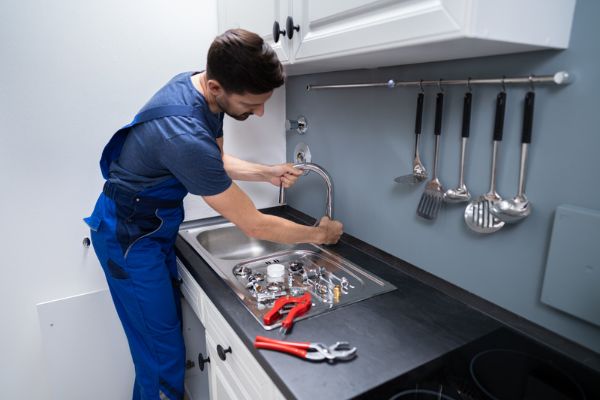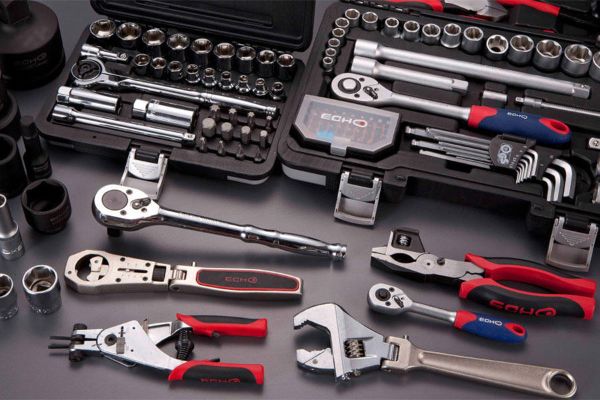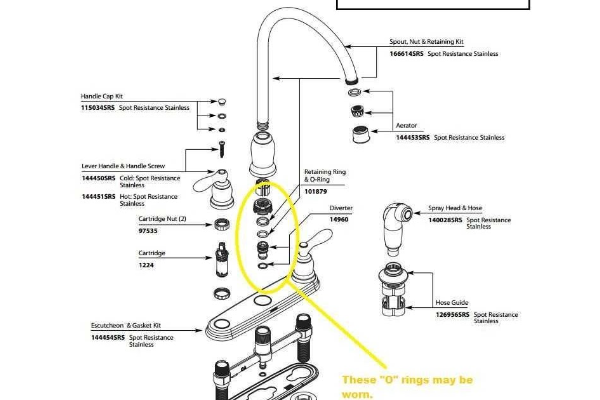How To Fix A Loose Kitchen Faucet- A loose kitchen faucet can be a real annoyance, causing drips, leaks, and potential damage to your sink or countertop. But more than that, it can be a sign of a larger problem that could lead to more serious plumbing issues down the line. That’s why it’s important to fix a loose kitchen faucet as soon as you notice it.

In this blog post, we’ll walk you through the steps to diagnose and fix a loose kitchen faucet, so you can keep your sink and plumbing in good working order. Whether you’re a DIY enthusiast or just looking to save a few bucks on a plumbing service call, these tips will help you tighten up your faucet and get your kitchen back in top shape.
How to Diagnose a Loose Kitchen Faucet?
If you suspect that your kitchen faucet is loose, it’s important to diagnose the problem as soon as possible to prevent further damage. Here are three steps you can take to diagnose a loose kitchen faucet:
- Inspect the faucet base: The first thing to do is to check the faucet’s base for any visible signs of damage. Look for any cracks, chips, or missing pieces. If the base is damaged, it will need to be replaced.
- Check the mounting hardware: The mounting hardware is what keeps the faucet securely attached to the sink. Check to see if any of the screws or nuts are loose. If they are, tighten them with a wrench. If the hardware is damaged or missing, it will need to be replaced.
- Examine the cartridge or valve stem: The cartridge or valve stem controls the flow of water through the faucet. If it’s loose, the faucet may wobble or move around. To check the cartridge or valve stem, turn off the water supply and remove the handle. Look for any visible signs of damage or wear. If it’s damaged, it will need to be replaced.
However, diagnosing a loose kitchen faucet involves inspecting the faucet base, checking the mounting hardware, and examining the cartridge or valve stem. Once you have identified the problem, you can take the necessary steps to fix it and prevent further damage.
Tools and Materials Needed to Fix a Loose Kitchen Faucet
List of tools needed to fix a loose kitchen faucet:

- Screwdriver: Depending on the faucet model, you may need a flathead screwdriver to remove the handle or other parts.
- Pliers: Pliers are useful for removing mounting hardware or other parts that may be hard to reach.
- Adjustable wrench: An adjustable wrench can be used to tighten mounting hardware or other parts.
- Basin wrench: A basin wrench is a specialized tool that can be used to tighten mounting nuts in hard-to-reach areas.
- Allen wrench: An Allen wrench may be needed to remove certain parts of the faucet.
- Silicone grease: Silicone grease can be used to lubricate parts and prevent them from corroding or seizing up.
List of materials needed to fix a loose kitchen faucet:

- Replacement parts: Depending on the problem, you may need to have replacement parts such as a new cartridge, valve stem, mounting hardware, or other components.
- Plumbers tape: Plumbers tape can be used to seal threads and prevent leaks.
- Cleaning supplies: Depending on the condition of your faucet, you may need cleaning supplies such as a soft cloth, mild soap, and water to clean off any dirt or debris.
Safety precautions to keep in mind when fixing a loose kitchen faucet:

- Turn off the water supply: Before beginning any repairs, turn off the water supply to the faucet.
- Use caution: Some parts of the faucet may be sharp or hard to reach. Use caution when working with tools to avoid injury.
- Wear protective gear: Depending on the task, you may need to wear protective gear such as gloves, safety glasses, or a mask.
By keeping these tools, materials, and safety precautions in mind, you can successfully fix a loose kitchen faucet and enjoy a properly functioning sink.
How to Fix a Loose Kitchen Faucet?
If you have diagnosed your kitchen faucet as being loose, here are five steps you can take to fix the problem:
- Turn off the water supply: Before you begin any work on your faucet, you need to turn off the water supply. Locate the shut-off valves under the sink and turn them off to stop the flow of water.
- Remove the faucet handle: Use a screwdriver to remove the screw that holds the faucet handle in place. Once you have removed the screw, gently pull the handle off the faucet.
- Tighten the mounting hardware: Check the mounting hardware underneath the faucet to see if any of the screws or nuts are loose. Use a wrench to tighten any loose screws or nuts. If the hardware is damaged or missing, replace it.
- Reinstall the faucet handle: Once you have tightened the mounting hardware, reattach the faucet handle. Use the screwdriver to tighten the screw that holds the handle in place.
- Test the faucet: Turn on the water supply and test the faucet to make sure it’s working properly. If the faucet is still loose, you may need to repeat the steps again.
By following these steps, you can fix the problem and prevent any further damage to your sink.
How to Fix a Loose Kitchen Faucet with a Loose Base?
If your kitchen faucet is wobbling or moving at the base, the problem may be a loose base. Here’s a step-by-step guide on how to fix a loose kitchen faucet with a loose base:
- Turn off the water supply: To begin any repairs, turn off the water supply to the faucet.
- Remove the faucet handle: Use a screwdriver to remove the handle of the faucet.
- Remove the mounting hardware: Use pliers to remove the mounting hardware nut.
- Inspect the mounting hardware: Check the mounting hardware for damage or wear. If it’s damaged or worn, you’ll need to replace it.
- Tighten the mounting hardware: If the mounting is in good condition, tighten it.
- Reinstall the mounting: Put the mounting hardware back on and tighten it securely.
- Reinstall the faucet handle: Put the faucet handle back on and tighten the screw.
- Turn on the water supply: Turn the water supply back on and test the faucet. If it’s still loose, you may need to repeat steps 3-6 or replace the mounting hardware.
By following these steps, you can fix a loose kitchen faucet with a loose base.
How to Fix a Loose Kitchen Faucet with a Loose Cartridge or Valve Stem?
If your kitchen faucet is wobbly or loose, the problem may be a loose cartridge or valve stem like the loose base. Here are the steps on how to fix a loose kitchen faucet with a loose cartridge or valve stem:
- Turn off the water supply.
- Remove the faucet handle.
- Remove the cartridge or valve stem.
- Inspect the cartridge or valve stem.
- Replace the cartridge or valve stem.
- Reinstall the faucet handle.
- Turn on the water supply.
By following these steps, you can fix a loose kitchen faucet with a loose cartridge or valve stem. Remember to take safety precautions, use the right tools, and seek professional help if needed.
In conclusion, a loose kitchen faucet can be a frustrating and potentially damaging problem if left unaddressed. Fortunately, fixing it doesn’t have to be a daunting task. By following the steps we’ve outlined, you can diagnose and fix the issue quickly and easily. In addition to the solutions we’ve provided, there are some additional tips you can follow to help maintain a secure faucet. Regularly cleaning and inspecting the faucet, tightening any loose parts as needed, and avoiding excessive force when turning the handles can all help prevent future problems.
Ignoring a loose kitchen faucet can lead to water damage, higher utility bills, and more expensive repairs down the line. However, if you’re not comfortable working on your plumbing or if you encounter a more serious issue, it’s always best to seek the help of a professional plumber.
10 Featureful & Best Touchless Bathroom Faucet With Temperature Control (topkitchenlab.com)
